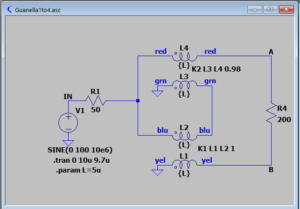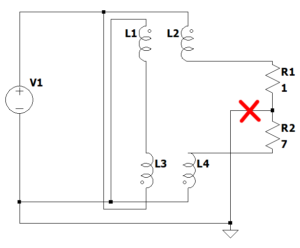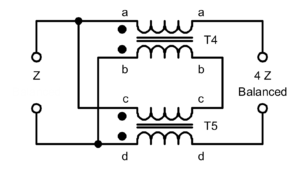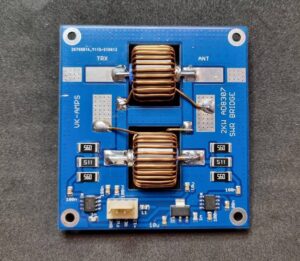The article A simple Simsmith model for exploration of a common EFHW transformer design – 2t:14t proposed a simple model.
The previous proposal
Above is the equivalent circuit used to model the transformer. The transformer is replaced with an ideal 1:n transformer, and all secondary side values are referred to the primary side.
The model works quite well for low leakage inductance / low ratio transformers but falls down for the higher leakage inductance / higher ratio transformers.
An improved model
The improved model is similar, but Cse in the model above is distributed to the outer sides of the lumped constant model.
Above is the equivalent circuit used to model the transformer. The transformer is replaced with an ideal 1:n transformer, and all secondary side values are referred to the primary side. Continue reading An improved simple Simsmith model for exploration of a common EFHW transformer designs (v1.03)









